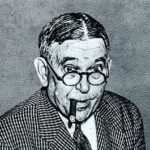This push for simplicity in product and software development has a purpose. Take Steve Jobs as an example. Even though he was a high-tech CEO, he could put himself in the shoes of customers, people who cared nothing for the ins and outs of the software industry.
Steve Jobs believed that stripping away non-essential features made products easier for people to learn from the start and easier to use over time. He wanted products and their software to speak for themselves. He realized that, in most cases, nobody would be standing over the shoulder of a person who is having their first experience with software, carefully describing every nuance of every feature.
Therefore, once Steve gave his verdict, everyone else knew it would have been foolhardy to argue with him, not because Steve wasn’t open to contrary opinions but because doing so would mean speaking up in favour of adding back complexity.






